Technologies
Apple Watch Ultra 2 Review: A Brighter Screen Makes My Favorite Watch Better
A searingly bright screen and faster responses are nice but not necessary upgrades.
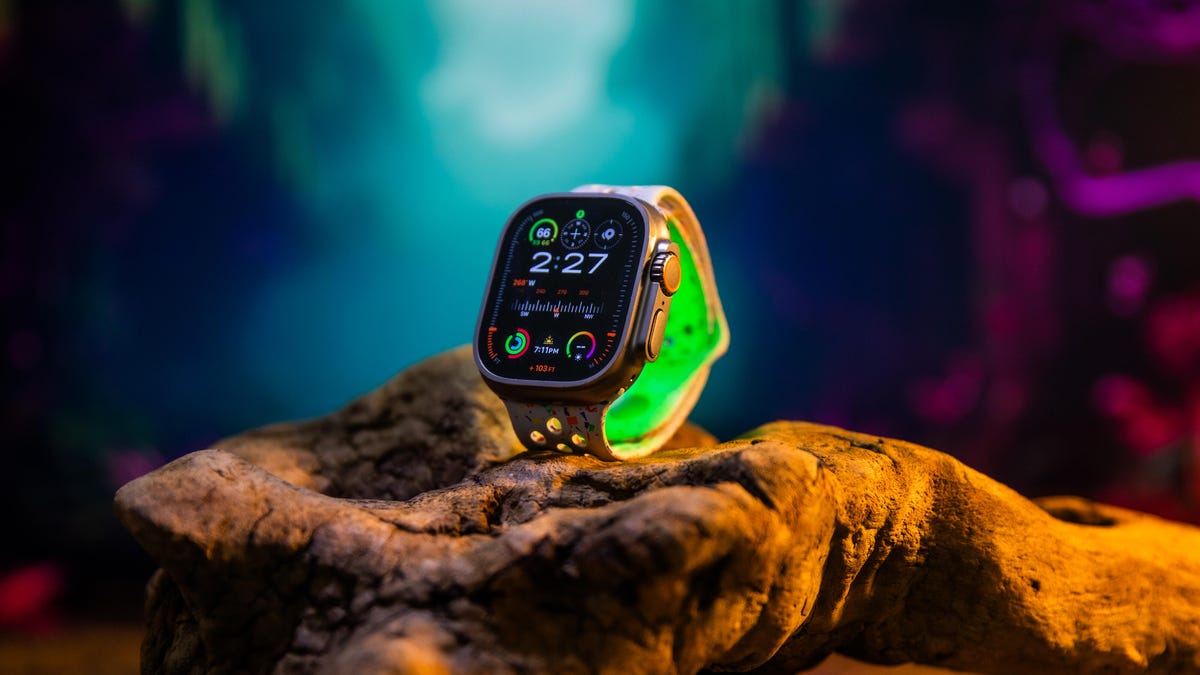
The Apple Watch Ultra 2 doesn’t try to reinvent the wheel, simply because it doesn’t have to. After wearing the Apple Watch Ultra 2 for a week on hikes, bike rides and some casual spelunking (seriously!), it has less of a wow factor compared with the first Ultra. And that’s only because it feels so familiar. It’s available now alongside the Apple Watch Series 9, which shares the same upgraded chip.
Like Apple’s first Ultra, the Apple Watch Ultra 2 costs $799 (£799, AU$1,399) and is sold as an outdoors watch with a rugged design and a range of sports features. The Ultra 2 still has a customizable action button, fall and car crash detection, ECG, temperature sensor, dual-frequency GPS, and built-in LTE. It shares the same heart rate sensor, which is incredibly accurate, and has the same collection of sports features to suit divers, runners and outdoor enthusiasts. It also looks identical to the first Ultra, even though the 49mm case is now made from 95% recycled titanium.
So what is different? The screen, chip and new Double Tap feature are the key highlights. For hikers and cyclists in particular, the Apple Watch Ultra 2 has a lot to offer, but that’s more a reflection on WatchOS 10 than the hardware itself. You’ll be able to get most of the same great experience on earlier, compatible Apple Watches too, including the original Ultra, which I named the most exciting watch in years when it came out in 2022.
That blisteringly bright Apple Watch Ultra 2 screen
It’s impossible to spot the difference between the original Ultra and the Ultra 2 — that is, until you see the screens. Apple has cranked the brightness to 3,000 nits on the Ultra 2, earning it the title of the brightest screen on any Apple product. The iPhone 15 Pro by comparison reaches a peak brightness of 2,000 nits, the same as the original Apple Watch Ultra.
I took the Ultra 2 on a hike in the Marin Headlands on a bright overcast day, then to Ocean Beach in San Francisco when the sun was in full force the following day. I didn’t have any issues seeing the screen in either situation, whether it was a quick time check, reading a message or glancing at my workout stats. To be fair, I had no issue with the screen brightness on the first Ultra when it comes to readability and outdoors use.
But it’s the flashlight that gets a bigger boost. I took the Apple Watch Ultra 2 into a cave and it lit up the rockface much better than the first Ultra when I compared the two.

You can even force the Ultra 2’s flashlight to hit maximum brightness by turning the digital crown, which is something you can’t do on the first Ultra. Side note: Don’t do what I did and crank the brightness on the flashlight in a dark room, screen aimed at your eyes. My retinas are still cursing me.
From a safety point of view, the brighter flashlight is great if you’re walking, running or riding at night. But you can’t see workout stats, messages or make a call without losing the light. Maybe in the future, the edge of the screen could stay at maximum brightness so you could still interact with the watch and not lose the light. I’m still not totally sure what the best use case is for this brighter new screen if it’s not for safety purposes, given the screen on the first Ultra was bright enough for just about any environment.
On the flip side, the Apple Watch Ultra 2’s screen also gets dimmer than the first watch, going down to just one nit when you have the watch in sleep mode. It can also get that dim if the screen isn’t active and you’re in a really dark room.
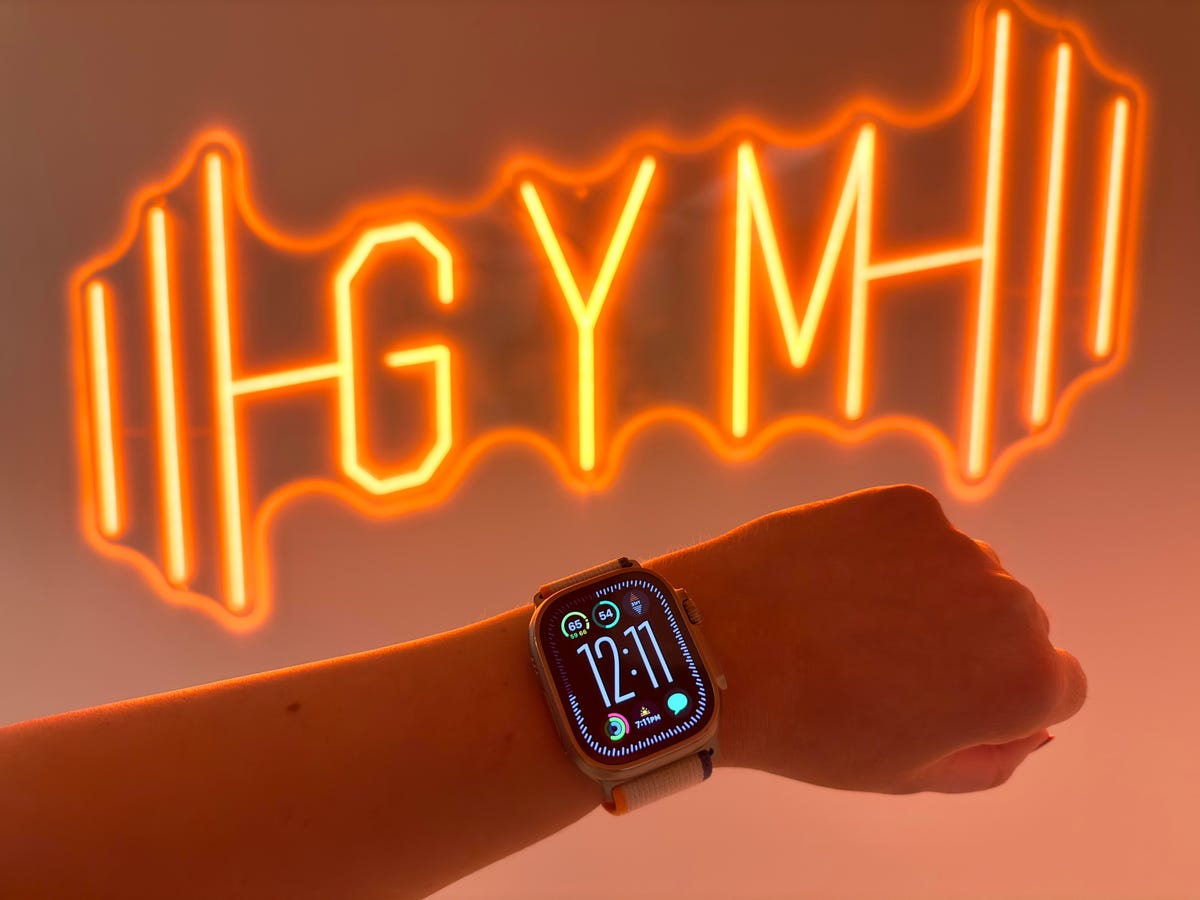
Apple Watch Ultra 2 gets Double Tap
The Ultra 2 shares the same S9 chip as the Series 9, which allows for on-device Siri, overall performance improvements and the double tap gesture.
Just as the name suggests, you double tap your thumb and index finger to act as a screen press when you can’t reach the watch with your other hand. There are over 65 different actions you can make in Apple’s own apps, like skipping a track in the Music app, taking a photo on the iPhone with the Camera remote app or starting a timer. Third-party apps can also work with Double Tap.

While I wasn’t able to use Double tap on my Ultra 2 review unit, I was able to try a preview of it on the Series 9, and the implementation will be the same. So far, the most helpful Double Tap action has been responding to a message when I can’t reach the screen, like when I’m walking my dog. I’ll feel the buzz of an incoming message, raise my wrist to read it, then double tap to reply and voice-to-text dictation automatically pops up.
Double Tap builds on the foundation set by AssistiveTouch, a feature designed to help people with physical impairments control the Apple Watch without touching the screen. Double Tap is a separate function exclusive to watches that have the S9 chip, and it’s on by default, while AssistiveTouch needs to be turned on from the Accessibility menu.
Double Tap has been accurate at registering my gestures, but I wish it did more for the workout app specifically. At the moment, double tapping doesn’t do anything. I’d love to see it sub in for the action button so if you can’t press it, you could just double tap instead to perform the same action, like marking a segment.
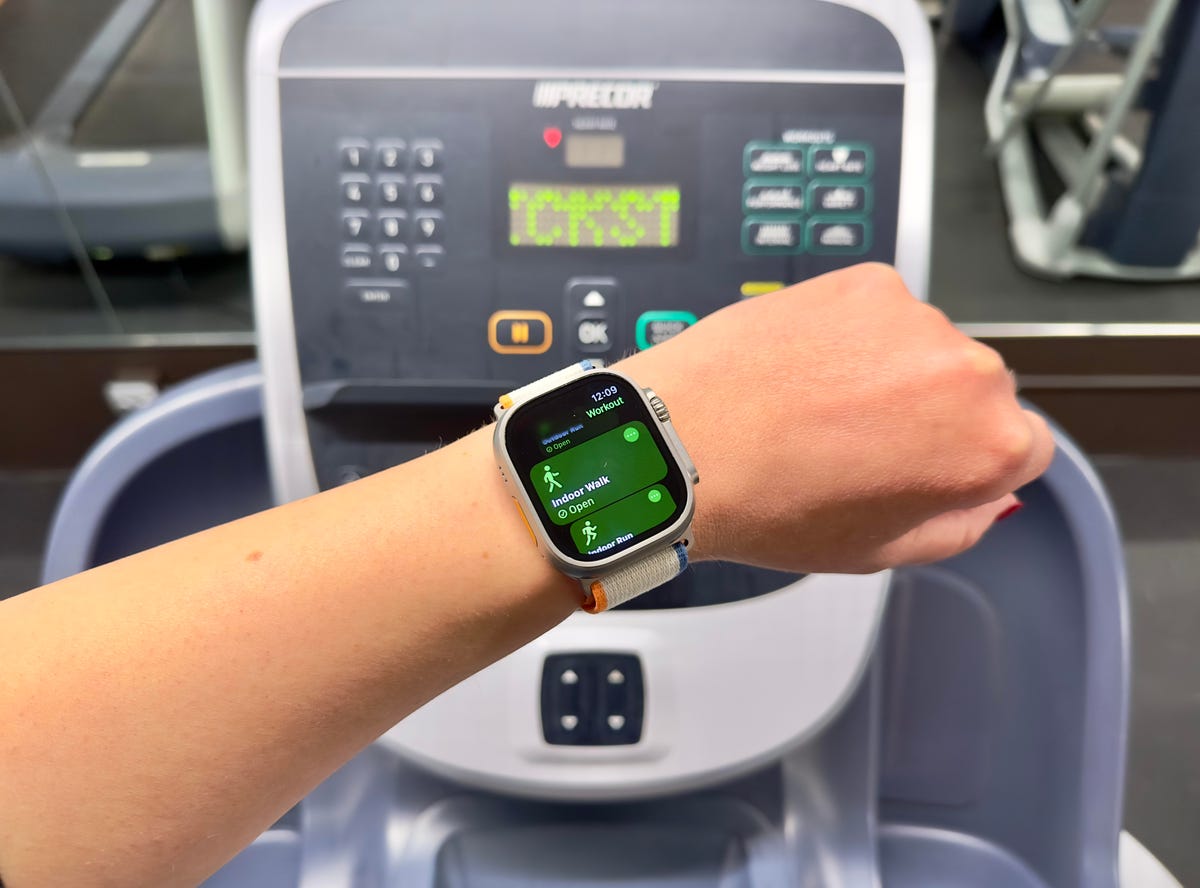
WatchOS 10 adds so much to Apple Watch Ultra 2
The Apple Watch Ultra 2 brings several important updates for hikers, cyclists and outdoor enthusiasts thanks to WatchOS 10. Offline and topographic maps are now available in Apple Maps and the compass app supports cellular waypoints. This means it shows the last place you had a signal so you can make a call and check messages on your own carrier, or a spot where you can make an emergency call on any network.

Cyclists get two big updates with WatchOS 10: support for Bluetooth accessories like power meters and being able to see your metrics as a live activity on the iPhone. Both features work for indoor and outdoor cycling workouts.
From a safety perspective, I love seeing the live activity on screen, because you don’t want to lift off the handlebars all the time to see your stats on the watch. It shows you all the same detail as the Apple Watch but on a much larger surface area. If you pair the watch with a cycling accessory like power meter pedals you can also see more in-depth data like cadence, speed and power, including functional threshold power.
You’re also getting a few new Ultra-exclusive watch faces including Modular Ultra, which has a horizontal complication slot and the option to show the time nice and big. It’s coming to the original Ultra too. Night mode on this watch face and the Wayfinder face now activates automatically using the ambient light sensor, instead of turning the digital crown like before.
Apple Watch Ultra 2 is faster thanks to that S9 chip
Aside from Double Tap, the S9 chip also supports on-device Siri, which is helpful because it’s faster and works when the Ultra 2 or your iPhone doesn’t have a signal. You can do things like start timers, start a workout, or even add a waypoint in the Compass app with your voice.
Later in the year, you’ll be able to ask Siri for health data, such as how many hours you slept or log medications. I wish that feature was active at launch, because it’s probably one of the big reasons I’d choose to use Siri on the watch rather than pull out my phone.
To see if there was a tangible difference in performance between the first and second Ultras, I ran a couple of side-by-side tests. Opening apps was the same, but the Ultra 2 turned on 20 seconds faster than the first Ultra. Message dictation was faster on the Ultra 2, but the biggest perk is it’s more accurate, especially getting my Australian accent right.
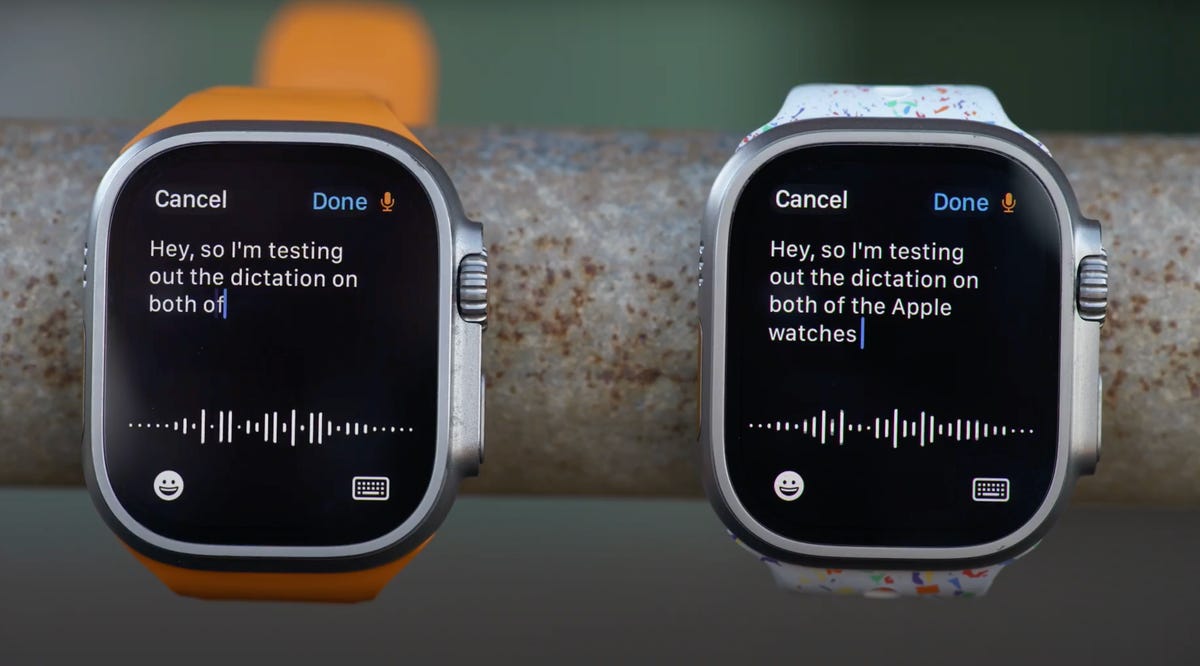
The Apple Watch Ultra 2 also has the same new ultra wideband chip found in the Apple Watch Series 9 that supports precision finding. You do need an iPhone 15 or 15 Pro to take advantage, otherwise you’ll just hear the familiar chime when you ping your phone from the watch.
I also appreciate that the Ultra 2 doubles the internal storage to 64GB of the original, a big deal for any media storage but especially for offline music. Unlike earlier Apple Watches, there is no limit to the amount of manual music downloads you can make on the watch.
Apple Watch Ultra 2 battery life is the same as before
There’s not much new when it comes to battery life as the Ultra 2 lasts the same amount of time as the first Ultra. It’s tricky to give a catch-all estimate of how long the battery will last since everyone uses their watch differently, but I get close to two full days of use out of the Ultra 2 on a single charge with notifications, a GPS workout and sleep tracking. Apple’s official rating is up to 36 hours with regular use, but it’s possible to get almost three days with light use and by not using LTE, playing music or tracking sleep.
For extended outdoor workouts with GPS, you can expect up to 12 hours, which is enough for a marathon or century ride. There’s also a low power mode that can now get up to 72 hours of runtime out of the Ultra 2 thanks to performance optimizations and the new chip. Compare that with the 60 hours Apple quoted for the first Ultra. I still have more battery testing to run with the Ultra 2, especially around LTE connectivity, so check back soon for more. You can also charge the Ultra 2 from the iPhone 15, thanks to USB-C.
While it’s a good thing that Apple managed to maintain the same battery life while adding resource-intensive tools like a brighter screen and S9 chip, I would have preferred to keep the same screen on the original Ultra and get more runtime as a result.
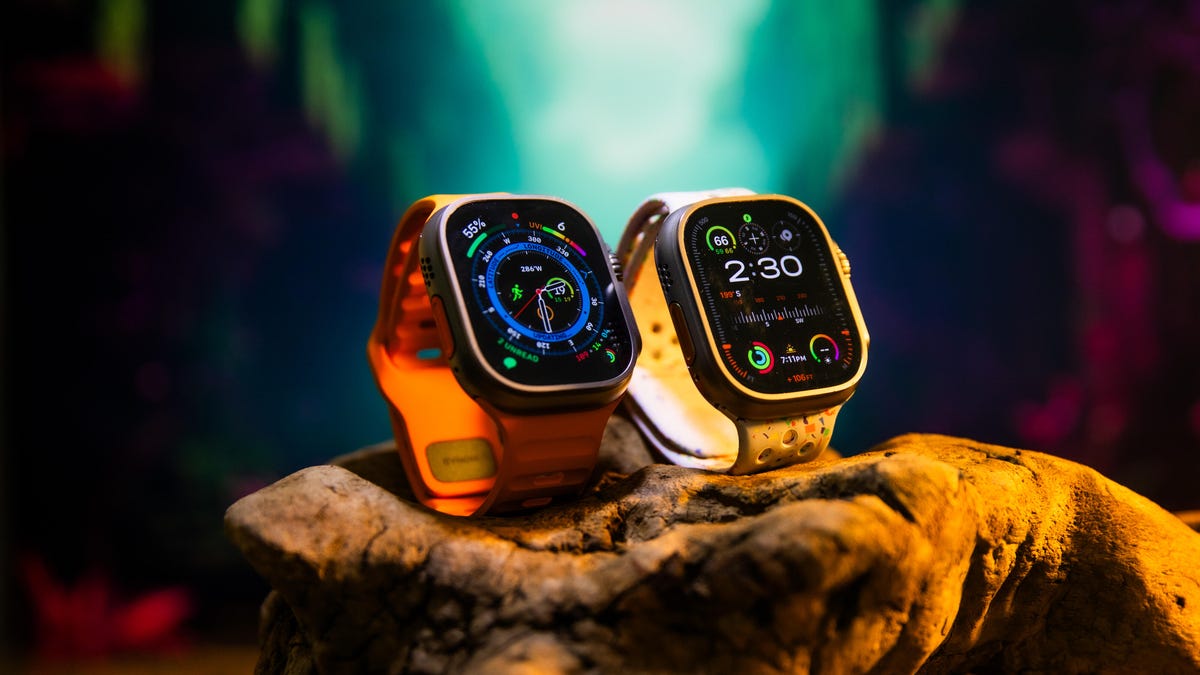
Who is the Apple Watch Ultra 2 for?
If you already own the first Apple Watch Ultra, this is a modest update and I’d recommend skipping the Ultra 2, especially since Apple’s always good at delivering feature updates to older watches through software. If you’re coming from an earlier Apple Watch Series, it’s more compelling because you get a completely new design, a huge screen and better battery life.
The Ultra 2 feels like it’s forging its own path compared with other sports and endurance watches because you can wear it everywhere, for almost any activity. Most importantly, it’s a true smartwatch: there are no compromises on app support, cellular connectivity or that seamless second screen experience that you often miss out on with competing sports watches.
The Apple Watch Ultra 2 is still missing a way to interpret all your health and fitness data with recovery metrics. I hope that’s in the works and maybe something that could be added in a software update.
Apple Watch Ultra 2 vs. Apple Watch Ultra vs. Series 9
| Apple Watch Ultra 2 | Apple Watch Ultra | Apple Watch Series 9 | |
|---|---|---|---|
| Shape | Square | Square | Square |
| Watch size | 49mm | 49mm | 41mm, 45mm |
| Materials, finishes | Titanium | Titanium | Aluminum, stainless steel |
| Display size, resolution | 1.91-inch, 502 x 410-pixel OLED | 1.91-inch, 502 x 410-pixel OLED | 41mm: 1.61-inch, 430 x 352-pixel OLED; 45mm: 1.77-inch, 484 x 396-pixel OLED |
| Dimensions | 44mm x 49mm x 14.4mm | 49 x 44 x 14.4mm | 41mm: 35 x 41 x 10.7 mm; 45mm: 38 x 45 x 10.7 mm |
| Weight | 61.4g | 61.3g | 31.9g-51.5g, depending on size, spec and material |
| Colors | Natural titanium | Natural titanium | Aluminum: midnight, starlight, silver, pink, Product Red; stainless steel: graphite, silver, gold; Hermes stainless steel: silver, space black |
| Always On | Yes | Yes | Yes |
| Interchangable bands | Yes | Yes | Yes |
| GPS | Yes (L1 and L5) | Yes | Yes (L1) |
| Automatic workout detection | Yes | Yes | Yes |
| Compass | Yes | Yes | Yes |
| Altimeter | Yes (operating range: -500m to 9,000m) | Yes | Yes |
| Water resistance | 10ATM (100 meters) and recreational scuba diving up to 40 meters | Yes, up to 100m | 5ATM (50 meters) |
| Calls | Yes | Yes | Yes |
| Microphone | Yes (3-mic array) | Yes | Yes |
| Speaker | Yes | Yes | Yes |
| Voice assistant | Yes (Siri, on-device) | Yes (Siri) | Yes (Siri, on-device) |
| Mobile Payments | Yes (Apple Pay) | Yes (Apple Pay) | Yes (Apple Pay) |
| Sleep tracking | Yes | Yes | Yes |
| Period tracking | Yes | Yes | Yes |
| Sensors | SPo2 (blood oxygen), ECG, optical heart, ambient light, high dynamic range gyroscope, high-g accelerometer, water temperature, depth gauge + app | SPo2 (blood oxygen), ECG, optical heart, ambient light, high dynamic range gyroscope, high-g accelerometer, water temperature, depth gauge + app | SPo2 (blood oxygen), ECG, optical heart, ambient light, high dynamic range gyroscope, high-g accelerometer |
| Emergency features | International emergency calling, Emergency SOS, crash detection | International emergency calling, Emergency SOS, crash detection | International emergency calling, Emergency SOS, crash detection |
| Compatibility | iOS 17 | iOS 16 | iOS 17 |
| Software | WatchOS 10 | WatchOS 9 | WatchOS 10 |
| Processor | Apple S9 | S8 SiP with 64-bit dual-core processor | Apple S9 |
| Connectivity | LTE and UMTS, Wi-Fi 4, Bluetooth 5.3 | LTE and UMTS, Wi-FI | LTE and UMTS, Wi-Fi 4, Bluetooth 5.3 |
| Memory and storage | 64GB | 64GB | 64GB |
| Power | USB-C magnetic fast charging | USB-C magnetic fast charging | USB-C magnetic fast charging |
| Battery life | Up to 36 hours; up to 72 hours (low power mode) | 36-hour battery life, 18 hours on LTE | Up to 18 hours; up to 36 hours (low power mode) |
| Battery capacity | Unavailable | Unavailable | Unavailable |
| Price (USD) | $799 | $799 | 41mm: from $399; 45mm: from $429 |
| Price (GBP) | £799 | £849 | 41mm: from £399; 45mm: from £429 |
| Price (AUD) | AU$1,399 | AU$1,299 | 41mm: from AU$649; 45mm: from AU$699 |
Technologies
Can Chemicals Turn My Orange iPhone 17 Pink? Here’s What I Found Out
There are reports that some cosmic orange iPhone 17 Pro handsets are turning pink. I threw chemicals at my iPhone to see what would happen.
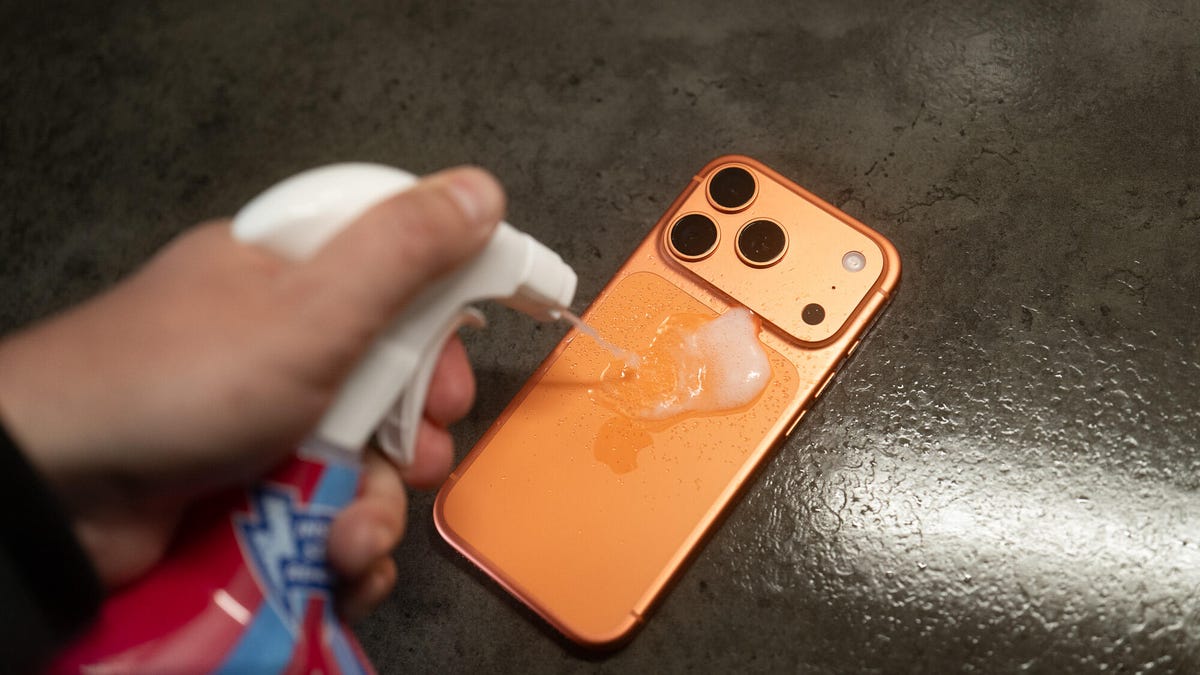
A recent Reddit thread suggests that it’s possible for a cosmic orange iPhone 17 Pro to turn vibrant pink. As PCMag’s Eric Zeman noted, it’s likely that the phone has been discolored by cleaning substances that affected the finish, turning it from vibrant orange to a wild hot pink. Sure, this might technically be a fault, but in all honesty I love pink phones and the idea of a hot pink iPhone 17 Pro filled me with joy. So I wanted to see if I could test the theory and see just what color-changing effects various household cleaners might have on my phone.
It’s important to note here that the iPhone 17 Pro I used was bought by CNET for the purposes of testing. Had I paid over $1,000 of my own money I wouldn’t be so reckless in smearing it with chemicals that could potentially irreparably harm it. And you shouldn’t either. If you need to clean your phone, do it safely. Disclaimer aside, let’s dive in.
The chemicals
I bought two chemicals to test this out. Zeman explains that it may be oxidation that caused the color to change and that hydrogen peroxide could do this. I couldn’t find this over the counter in the UK, so I instead bought an «oxy-active» stain remover spray that, among other things, contains «oxygen-based bleaching agents» which sounded ideal. Apple also clearly states «don’t use products containing bleach or hydrogen peroxide» on its support page so, naturally, I bought some thick bleach too.
Oxy application
I started by spraying the oxy cleaner on a microfiber cloth until it was noticeably wet from the liquid and then liberally applied this all over the rear of the iPhone. The Reddit user with the affected phone showed that it only affected the metal parts, not the glass back panel, so I made sure to focus my attention on the sides and camera bar.
With the phone well and truly doused in chemicals that have no business being anywhere near a phone, I left it to sit and think about what it had done for 30 minutes — after which time I wiped it dry and took a close inspection. Disappointingly, my phone was still factory orange, rather than «what the hell have you done to your phone» pink. Time to move on.
Bleach blast
I opened the bleach and trying hard not to think about my days as a middle school cleaner, applied a liberal blob of the stuff to a cloth and smeared it over the defenceless phone, concentrating again on the metal areas. I definitely should have worn protective gloves for all of this so please make sure you take better care of yourself than I do if you do anything with bleach.
Again, I gave it a 30-minute settling in period before cleaning it off and inspecting the results.
The phone remained as orange as ever, looking as box fresh as it was the day before when it was, indeed, box fresh. The orange color hadn’t changed and now almost 24 hours later there’s still no sign of discoloration of any kind.
Is the pink iPhone 17 real?
I can’t say with any certainty whether the Reddit user’s images of a pink iPhone 17 Pro are real or not. The cuddly human side of me wants to take them at their word, while the journalist in me is sceptical. What I can say with certainty is that putting your orange iPhone into close contact with household cleaning products isn’t going to win you a funky, ultra-rare pink hue that you could sell on eBay for a small fortune.
It’s possible that using pure peroxide could be the thing that does it, but to be honest, if you’re going out of your way to throw industrial-grade chemicals at your phone then you may as well just directly try and dye it. My goal here was to see how susceptible the orange model is to everyday household cleaners such as kitchen cleaner or bathroom bleach — the sort of things it might naturally come into contact with in routine use. And what I’ve found is that, no, it won’t ruin the nice orange color. But it’s probably still not good for your phone.
Technologies
My Teen Loves Her Apple AirPods Pro 2 and You Will Too With This $100 Off Deal for Black Friday
Apple’s AirPods Pro 2 have everything you could want from a pair of wireless earbuds, plus a steep discount.
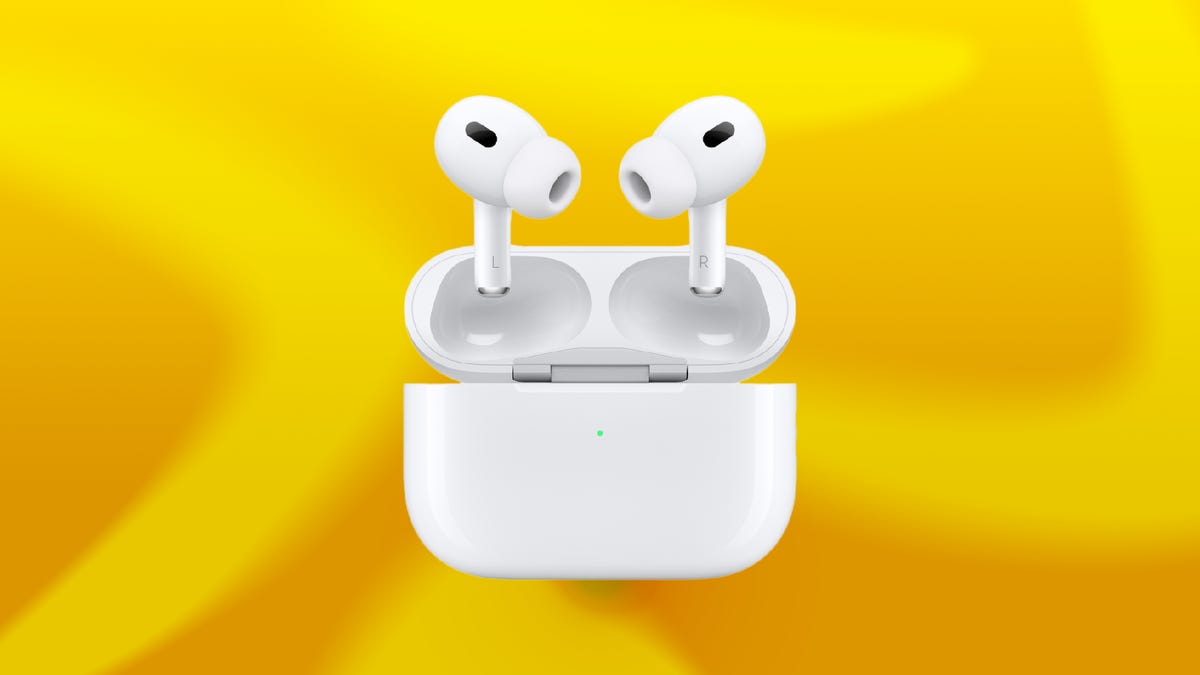
Black Friday deals: The Apple AirPods Pro 2 are some of the best personal audio gear on the market, even if they aren’t the latest model anymore. Sure, Apple’s AirPods Pro 3 are the newest earbuds in the lineup but the AirPods Pro 2 are still an excellent pick for most people.
They’re an even better buy this week during early Black Friday sales when you can get your hands on a pair of Apple AirPods Pro 2 at a discount. Right now, Walmart is shaving a massive $100 off the AirPods Pro 2, dropping the cost to $139. That’s one of the lowest prices we’ve seen — but we doubt this deal will stick around for long.
Don’t miss any of our unbiased tech content and lab-based reviews. Add CNET as a preferred Google source.
HEADPHONE DEALS OF THE WEEK
-
$248 (save $152)
-
$298 (save $131)
-
$170 (save $180)
-
$250 (save $200)
CNET’s key takeaways
- You can get these amazing earbuds for just $139 right now at Walmart.
- My teenager loves everything about them.
- The sound quality is exceptional.
- The noise cancellation can help give you some peace, even in a busy home.
My 13-year-old daughter loves her music and her privacy, and for years she has wanted a pair of AirPods. They’re not cheap so I’ve only been getting her more budget options, like the Amazon Echo Buds, as a result. These kept seemingly disappearing, though, so I finally ponied up for the AirPods Pro 2.
I picked them up during last year’s sales, and they were definitely well-received. She’s happy, she uses them every day, and she hasn’t lost them yet. The AirPods Pro 2 are currently on sale at Walmart for $139, a nice price for a high-quality pair like these, and one of the lowest we’ve seen.
What about the AirPods Pro 3?
The AirPods Pro 3 weren’t available at the time I bought the AirPods Pro 2, but they were rumored, and I didn’t wait to see what they offered. As CNET’s resident headphone expert, David Carnoy summarized in his AirPods Pro 3 and Pro 3 comparison, the newer model is «significantly improved in the four most important areas: fit, sound quality, noise cancellation and battery life.» They also have heart-rate monitoring, like the Beats Powerbeats Pro 2.
Hey, did you know? CNET Deals texts are free, easy and save you money.
While these are undoubtedly all important things, a lot of people aren’t going to notice the differences or make the most of the new features. With the AirPods Pro 3 being newer, they’re on a smaller sale and are currently available at Amazon for $220, which is $30 off the list price.
Why I didn’t get the AirPods 4 instead
Why did I choose AirPods Pro 2 instead of the AirPods 4 with ANC? First, as I mentioned in another article about a different pair of earbuds I bought, I think sealed, in-ear buds are better than open-design models like the AirPods 4. The seal creates another layer of noise isolation and contributes to superior sound quality, and if you want to pay attention to the world you can always engage ambient sound mode, which Apple calls transparency mode.
Also a factor was that, at the time, Carnoy considered the Pro 2 the best Apple noise-canceling wireless earbuds: «While we’re quite impressed with those new models — and with the AirPods 4 ANC in particular — the AirPods Pro 2 remain arguably the best Apple AirPods you can buy if you don’t mind having silicone ear tips jammed in your ears,» he said.
My daughter uses earplugs all the time to help her sleep, so she definitely qualifies as somebody who’s comfortable stuffing things in her ears. Like her fingers, when I start using words like «sigma,» «skibidi» and «relatable» to try to relate to her.
I asked Carnoy about the Pro 2s potentially not fitting in her kid-size ears and he reassured me that the range of eartips that come with the Pro 2s «now include XS, so they should fit.»
Do AirPods make a great gift?
It took me years to finally understand, but yes, for someone looking for wireless earbuds, AirPods — especially the Apple AirPods Pro 2 — make the perfect gift, regardless of whether you’re a teenage girl.
Join Our Daily Deals Text Group!
Get hand-picked deals from CNET shopping experts straight to your phone.
By signing up, you confirm you are 16+ and agree to receive recurring marketing messages at the phone number provided. Consent is not a condition of purchase. Reply STOP to unsubscribe. Msg & data rates may apply. View our Privacy Policy and Terms of Use.
Technologies
If You’re Flying for the Holidays, This Bluetooth Dongle Transforms In-Flight Movies, and It’s 35% Off for Black Friday
Watch airplane movies just like you would at home with this game-changing device.
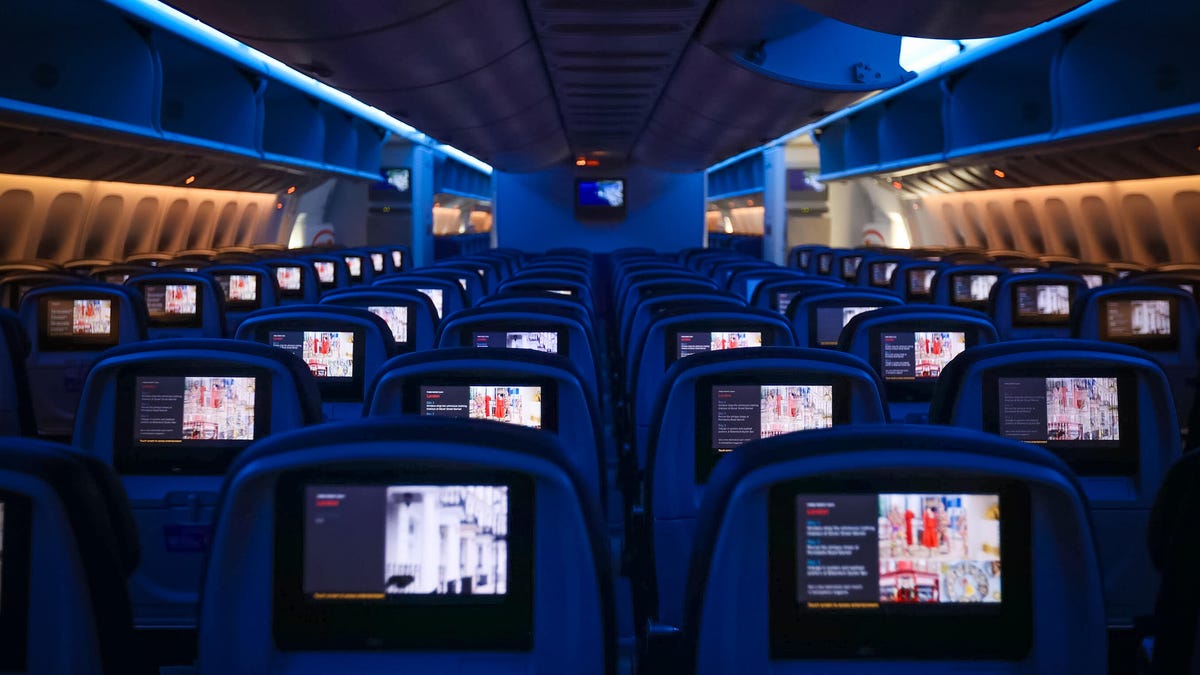
Air travel for the holidays can be stressful, especially when winter weather or flight delays force a change of plans, but one perk of flying still remains — watching new-release movies. However, in-flight entertainment on most airlines usually requires a wired set of earbuds. (And the ones the airline hands out are so bad they may as well not even be connected.)
I’d far prefer to use my wireless, noise-canceling AirPods Pro, but they connect only via Bluetooth. There’s a simple tech solution that makes viewing movies on the plane feel more like watching them on your couch.
The AirFly is a simple Bluetooth dongle that allows me to connect my wireless earbuds directly to the airplane’s entertainment system, eliminating the need for adapters or wired workarounds.
It’s become a must-pack item in my travel bag. Since I started using it, I’ve stopped dreading in-flight audio and finally get to enjoy movies on the plane. If you fly often, this little gadget could completely change how you travel. And the base level AirFly SE is 35% off for Black Friday at Amazon.
The AirFly Pro lets me enjoy in-flight entertainment
The AirFly Pro from Twelve South is a minimally designed dongle that allows me to connect to the 3.5mm headphone jack in my airplane seat, enabling me to listen to in-flight entertainment on my noise-canceling earbuds.
All I have to do is pair the AirFly with the Bluetooth headphones I’m using, such as my AirPods Pro, plug the AirFly into the display in front of me, and I’m all set. I don’t even need to use my phone to connect the two devices.
There are several versions of the AirFly: the AirFly SE, which is currently on sale for $26 on Amazon and connects to just one set of headphones, the AirFly Pro at $55, the Pro V2 at $60 and the Pro 2 Deluxe at $70, which comes with an international headphone adapter and a suede travel case.
Hey, did you know? CNET Deals texts are free, easy and save you money.
I use the AirFly Pro, which has been a game-changer for me on flights. I’ve never had to worry about battery life since the AirFly Pro lasts for over 25 hours and can be fully charged in just three hours. I can also pair two separate pairs of headphones to a single AirFly Pro, in case I’m with someone else on a flight and want to watch the same movie or show.
And if that’s not enough, the AirFly Pro also doubles as an audio transmitter, allowing me to turn any speaker with a headphone jack, such as my old car stereo, into a Bluetooth speaker.
The AirFly Pro makes a great gift for any traveler
The AirFly Pro is the perfect present to give to someone who’s planning to travel this year. Besides my Anker MagSafe battery pack, the AirFly Pro has become my most treasured travel accessory when I fly, which is why I consider it one of those can’t-go-wrong gifts.
For more travel gear, here are our favorite tech essentials to travel with and our favorite travel pillows.
Join Our Daily Deals Text Group!
Get hand-picked deals from CNET shopping experts straight to your phone.
By signing up, you confirm you are 16+ and agree to receive recurring marketing messages at the phone number provided. Consent is not a condition of purchase. Reply STOP to unsubscribe. Msg & data rates may apply. View our Privacy Policy and Terms of Use.
-

 Technologies3 года ago
Technologies3 года agoTech Companies Need to Be Held Accountable for Security, Experts Say
-

 Technologies3 года ago
Technologies3 года agoBest Handheld Game Console in 2023
-

 Technologies3 года ago
Technologies3 года agoTighten Up Your VR Game With the Best Head Straps for Quest 2
-

 Technologies4 года ago
Technologies4 года agoBlack Friday 2021: The best deals on TVs, headphones, kitchenware, and more
-

 Technologies4 года ago
Technologies4 года agoVerum, Wickr and Threema: next generation secured messengers
-

 Technologies4 года ago
Technologies4 года agoGoogle to require vaccinations as Silicon Valley rethinks return-to-office policies
-

 Technologies4 года ago
Technologies4 года agoOlivia Harlan Dekker for Verum Messenger
-

 Technologies4 года ago
Technologies4 года agoiPhone 13 event: How to watch Apple’s big announcement tomorrow
